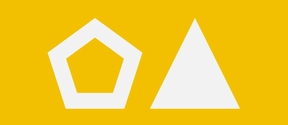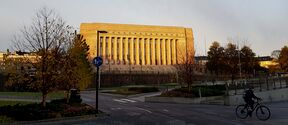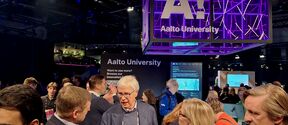Ars Electronica 2020 presents artists from Aalto both locally and remotely

Due to the pandemic at hand, the majority of this year’s Ars Electronica Festival is organised Sep 9–13 by linking presentation, performances and events internationally. Addition to the festival’s main location in Linz, Austria, the program includes 120 “Kepler’s Gardens” around the globe.
“The corona crisis makes a Linz festival mile with 100,000 visitors from all over the world impossible,” says Gerfried Stocker, Ars Electronica’s Artistic Director. “For us as festival organisers, this can only mean working with a broad public to find new ways to deal with questions about our future, especially now, in the midst of this crisis."
For the first time, the festival is testing itself as a digital travel agency that brings visitors from all over the world to “gardens between art, technology and society” that are as fascinating as they are inspiring. This way the Ars Electronica concept shows resilience and solidarity between the creative communities that are the basis for its activities over the last 40 years.
Several projects and artists from Aalto University have been invited to join the festival, streaming from the Aalto Garden in Otaniemi, Espoo. Furthermore, the festival program includes a project from New Media students Camilo Sanchez, Liisi Soroush, Niko Tiainen and Kaappo Lähdesmäki, called Hamistagan. The work had its premiere last year in Suomenlinna fortress island and will be exhibited locally in Linz at the Wild State.
'To this version we needed to redevelop our installation in terms of light and added Niko Tiainen as a visual artist to our team. Overall Ars Electronica is a very interesting institution and we are feeling lucky to be presented there', Soroush tells.
Hamistagan contemplates on sousveillance, attention economy, opacity and economical shift based on intellectual property. At Ars Electronica 2020, the work both celebrates and observes the diversity of the international community, the new media scene and nationalities of the participants in 20 different languages.
Whilst representing current forms of oppression in the information age, the algorithms contribute to the collective production. The choice of interaction resonates with the ubiquitous tracking of data in social media.
In addition, a project by Aalto Media Lab student Bailey Polkinghorne is presented in Linz. His installation Organically Sourced Sound aims to convey the struggle of the composer trying desperately to cram aspects of nature into a creative output when the use of modern technology is working strongly against it.

Streaming from Espoo
The Ars Electronica Garden in Espoo will be streaming various projects, such as Uncertain Practices on Friday, September 11th, that brings together three artists―Koray Tahiroğlu, Laura Beloff and Andy Best―working through AI, music, artificial biology and an art-science network platform through studio visits, talks and a performance. The Aalto Garden events are produced by Aalto Studios at Aalto University.
remote/displaced by Andrea Mancianti, Roberto Fusco, Sebastian Schlect etc. allows for an immersive exploration of a virtualized physical space: Öljysäiliö 468, a vast, decommissioned and repurposed oil tank in East Helsinki. The project takes the shape of a small collection of brief immersive audio-visual visits to this special remote place, exploring ways to listen to the encounter between sound, technology, space and landscape, as it emerges like a precarious ecosystem, where the boundaries between natural and artificial are constantly renegotiated and deformed by technology.
The Systems of Representation research group from the Department of Media, including Lily Díaz-Kommonen, Juan Duarte Regino, Emil Lindfors and Gautam Vishwanath, will present the work Chronicles of an Art and Science Collaboration that highlights the use of autoethnographic narrative as tool for artistic and design research. This audiovisual hybrid art work brings together the self-reflections of three scientists who participated in an art and science collaboration dealing with the use of bio-cellulose for art and design purposes. Through their stories we learn about what inspired them to follow careers in science and how the making of a contribution to sustainability and the good of humankind sustains their work objectives.
The online program of Ars Electronica is free of charge, which is why it offers an access for anyone interested in experiencing the festival and itsworld class exhibitions and performances. At all these locations between September 9 and 13, artists, scientists, developers, entrepreneurs and activists will be addressing the question of how the “new” world should look after – or with? – Corona.
Read more:
Read more news

Entrepreneurship offers women empowerment in late-stage careers
Launching their own venture offers older women a chance to turn their age into a competitive advantage, reveals new research.
Topics raised in the 2025 Learning Centre customer survey
Thank you to everyone who participated in the survey!
Elites wield huge influence over deepening polarisation –– now we can tell exactly how much
Researchers used network theory to develop a method for measuring the impact of individuals on societal division.






